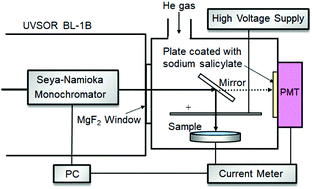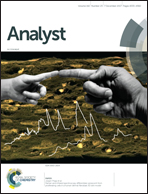Photoionization of environmentally polluting aromatic chlorides and nitrides on the water surface by laser and synchrotron radiations
Abstract
The detection limits and photoionization thresholds of polycyclic aromatic hydrocarbons and their chlorides and nitrides on the water surface are examined using laser two-photon ionization and single-photon ionization, respectively. The laser two-photon ionization methods are highly surface-selective, with a high sensitivity for aromatic hydrocarbons tending to accumulate on the water surface in the natural environment due to their highly hydrophobic nature. The dependence of the detection limits of target aromatic molecules on their physicochemical properties (photoionization thresholds relating to excess energy, molar absorptivity, and the octanol–water partition coefficient) is discussed. The detection limit clearly depends on the product of the octanol–water partition coefficient and molar absorptivity, and no clear dependence was found on excess energy. The detection limits of laser two-photon ionization for these types of molecules on the water surface are formulated.



 Please wait while we load your content...
Please wait while we load your content...